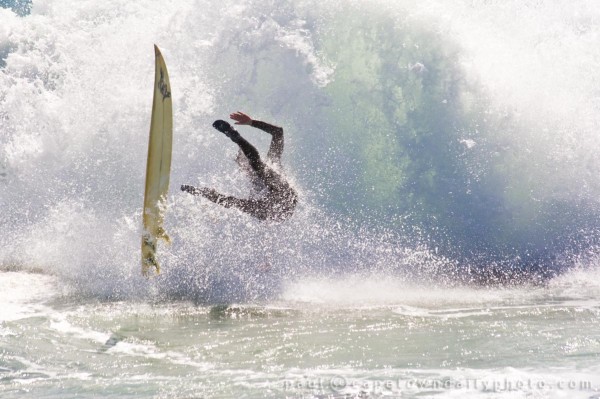
The Science of Surfing – Physics on vacation
The Science of Surfing – Physics on vacation
Summer is coming and the most popular of all beach sports is surfing. Daredevils hop on their boards and paddle out past the breakers and wait for a great wave that they can ride in (repeat). The sport of surfing, started by “The Duke” a mere 50 years ago, is not only a great way to exercise and get outdoors (not to mention a great way to terrify one’s mother), but it is a great lesson in Physics. From the initial paddle to the surfer’s final wipeout, surfing is an entirely scientific experiment.
Newton’s First Law of Motion states that an object in motion will stay in motion (the waves) while objects at rest will stay at rest (the surfer on the board). The waves move beneath the surfer, but the surfer will stay afloat a top the water, rather than being carried on the waves. The surfer is able to shift his or her center of gravity on the board to accomodate the moving waves beneath. This allows a surfer to remain in the same place between sets and wait for the perfect wave. There are two forces working while the surfer waits on the board. The first is buoyancy and the second is gravitational pull. The center of a surfer’s mass is in the middle of the board and the buoyancy of the board comes from its smaller density than the water on which it rests. The gravitational pull of the water keeps the surfer on the board, rather than forcing the surfer to exert energy in treading water next to the board.
As a wave forms (which involves surface tension, no time for this now, another blog post perhaps, but just now that part of physics is involved too), the inertia of the wave gathers speed as it approaches the surfer. If the surfer remains stationary upon the surface of the water, the wave will pass beneath the surfer (given that it is not a gigantic rogue wave). If the surfer wishes to catch the wave, he or she must accelerate their speed to match the speed of the wave at its crest (just before the water breaks into whitecaps). The balance of the surfer upon the wave requires manipulating a surfer’s center of gravity to accommodate the change in net force from the wave on the bottom of the board and the shift of the gravitational pull when the surfer stands and redistributes their weight. The center of the surfer’s mass is no longer at the level of the water, it is now approximately 4 feet above the water. This changes the distribution of weight on the board and the gravitational pull. The water does not move at a smooth and steady constant, so the surfer must continually change its position to accommodate the changing mass of the water.
Once the water becomes more shallow, the wave will lose its inertia and break (this causes the crashing sound you hear in the ocean when you are sunbathing with the seagulls). The surfer should lower his or her center of gravity to slow down and allow the wave to crash before they do!
Sources:
https://www.exo.net/~pauld/activities/surfing/physicsofsurfing.html
https://adventure.howstuffworks.com/outdoor-activities/water-sports/surfing4.htm
https://science.discovery.com/interactives/literacy/newton/newton.html
National Geographic – https://adventure.nationalgeographic.com/adventure/extreme-photo-of-the-week/#/waimea-bay-surf-jamilah-star_33745_600x450.jpg
https://www.capetowndailyphoto.com/blog/2010/09/surfing-wipeout-at-mouille-point/
https://en.wikipedia.org/wiki/Wind_wave


